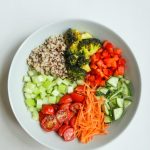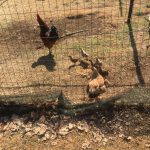
When we started the agricultural project in 2003 the term “Global village” was in vogue, perfectly capturing the immediacy and connectedness of the different countries on planet earth. What it pointed to still applies.
In a village, people may not be emotionally close but they all know each other. They face the same fortune from the elements, be this from a flood or a marauding army from elsewhere. To apply the village metaphor to the world suggests that we are all in this together, something only intermittently appreciated. It is when one country feels it is unfairly footing the bill for advantage elsewhere that this goodwill is strained, and steps are taken to rectify the perceived unequal playing field. This is particularly applicable to the area of trade.
Agricultural trade
In theory agricultural trade goes like this: in country A’s climate, x cannot be grown, but y grows very well; country B produces x but needs y. Throw a few more countries into the mix, each bringing products to the international market place and you have the basis for exporting and importing.
Rice is one of the agricultural commodities South Africa imports, and will always need to do so, even if there have been some rice-growing experiments. South Africa could be self-sufficient with wheat but isn’t. A changing climate and competing crop possibilities make it less appealing to the farmers who could grow wheat. Palm oil is our third major agricultural import. Again, a commodity that is easier to import than encouraging local production. South Africa’s major agricultural exports are citrus, table grapes, wine, apples and pears, maize, nuts, sugar, wool and fruit juices (Agbiz, 2021).
The role of the supply chain
The strength of a particular commodity often lies in its supply chain. The Agricultural Policy Action Plan (APAP) of five years ago looked at interventions in the supply chain to strengthen commodities. Soybeans was looked at in the context of a Poultry/Soybeans/Maize Integrated Value Chain, for example, with an eye on reducing the costs of animal feeds. Almost without exception, the annual baseline by the Bureau for Food and Agricultural Policy (BFAP) lists a commodity where the farming methodology and expertise in the country is world-class, but which is made less competitive because of input costs like feed or fertiliser. When inputs like fertiliser are imported, a host of costs (some very variable) like deep sea freight rates, unloading- and administrative cost at ports, and inland transportation kick in. The exchange rate can also make matters unpredictable.
Farm subsidies exist which give farmers in some countries an unfair advantage of those where these support measures from government do not exist. A subsidy in any area of the supply chain, also, enables the advantages elsewhere. If the price of producing grain is lower, for example, this edge is passed on to that country’s poultry producers who will market their products at a price lower than countries.
Is it fair?
Free market champions and importers will say that the importing country also enjoys the fruit of that subsidy because the poultry cuts (or whatever) are cheaper. When imports land at a price that is below the cost of production locally, the local industry faces the challenge of upping its game. When an unfair advantage exists, government is called on to offer some form of protection (tariffs).
Sometimes producers/exporters in a country export their product to another country at a loss (they have already covered their costs and made a profit elsewhere). This places pressure on local producers who cannot compete, and the exporters are accused of dumping.
Governments are placed in a position where they have to weigh up advantages and disadvantages of involvement. Poultry products brought into the country in this way make chicken more affordable to consumers, but at the cost of the country’s own poultry sector. How to balance livelihoods and cheaper food?
The Agribook Exporting page introduces you to concepts, role players and sources of information for you to pursue. See https://agribook.co.za/marketing-finance/exporting/
Photo by Ian Simmonds on Unsplash







